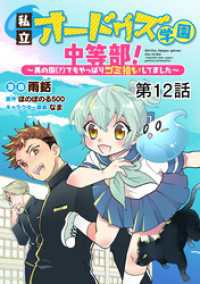- ホーム
- > 洋書
- > 英文書
- > Literary Criticism
Full Description
"What I lacked and what I needed," confessed Samuel Clemens in 1908, "was grandchildren." Near the end of his life, Clemens became the doting friend and correspondent of twelve schoolgirls ranging in age from ten to sixteen. For Clemens, "collecting" these surrogate granddaughters was a way of overcoming his loneliness, a respite from the pessimism, illness, and depression that dominated his later years.
In Mark Twain's Aquarium, John Cooley brings together virtually every known communication exchanged between the writer and the girls he called his "angelfish." Cooley also includes a number of Clemens's notebook entries, autobiographical dictations, short manuscripts, and other relevant materials that further illuminate this fascinating story.
Clemens relished the attention of these girls, orchestrating chaperoned visits to his homes and creating an elaborate set of rules and emblems for the Aquarium Club. He hung their portraits in his billiard room and invented games and plays for their amusement. For much of 1908, he was sending and receiving a letter a week from his angelfish. Cooley argues that Clemens saw cheerfulness and laughter as his only defenses against the despair of his late years. His enchantment with children, years before, had given birth to such characters as Tom Sawyer, Becky Thatcher, and Huck Finn. In the frivolities of the Aquarium Club, it found its final expression.
Cooley finds no evidence of impropriety in Clemens behavior with the girls. Perhaps his greatest crime, the editor suggests, was in idealizing them, in regarding them as precious collectibles. "He tried to trap them in the amber of endless adolescence," Cooley writes. "By pleading that they stay young and innocent, he was perhaps attempting to deny that, as they and the world continued to change, so must he."








